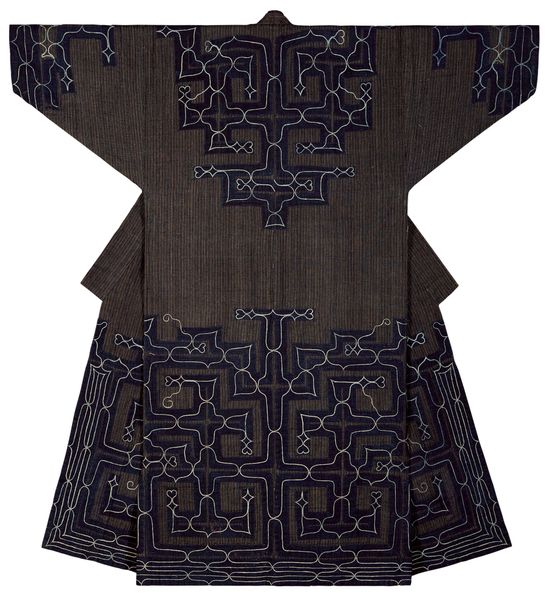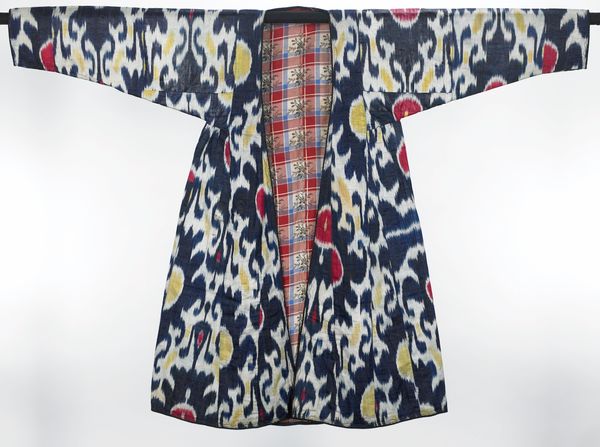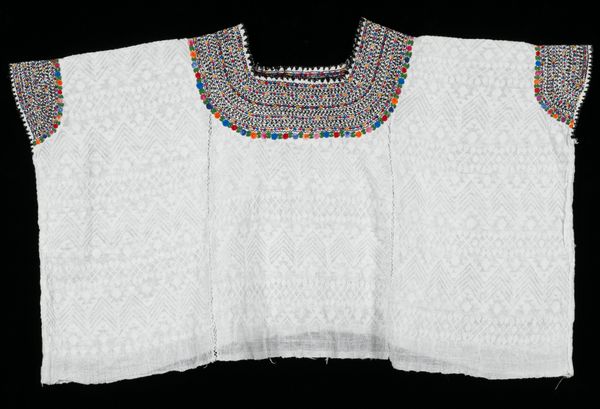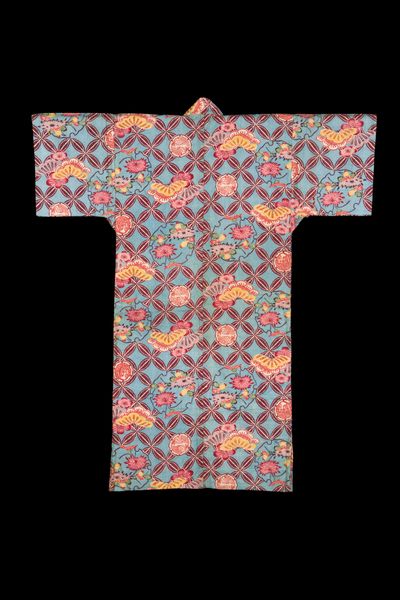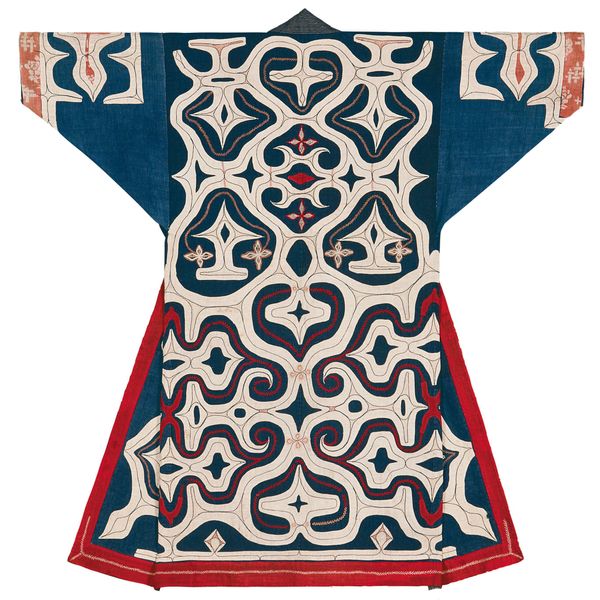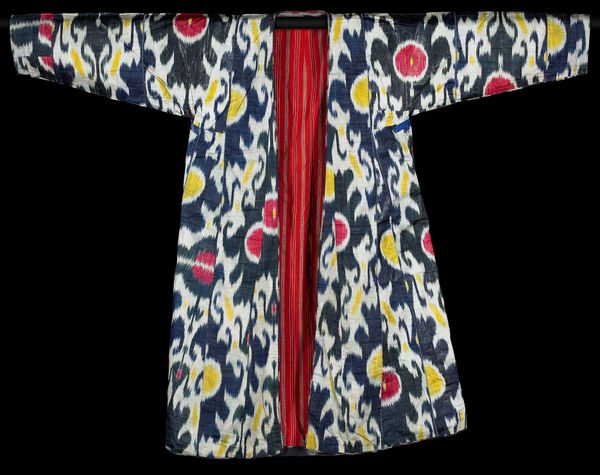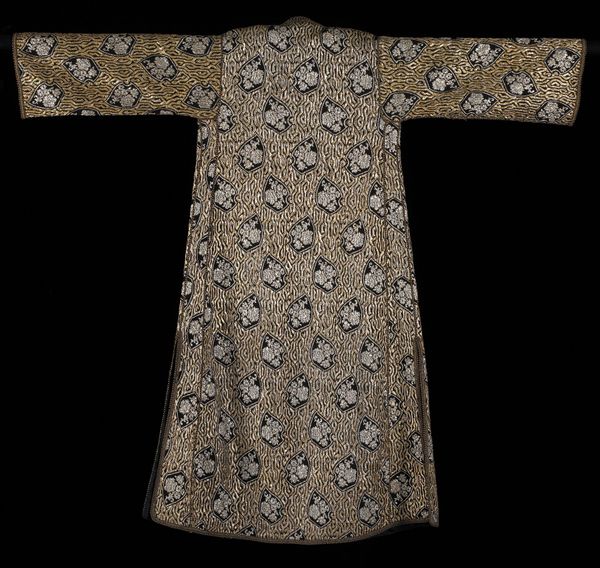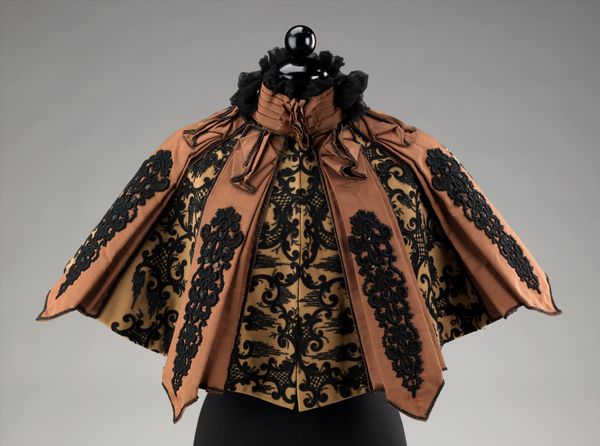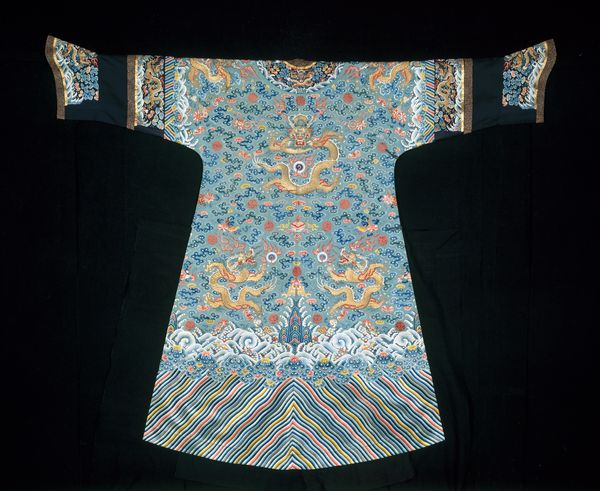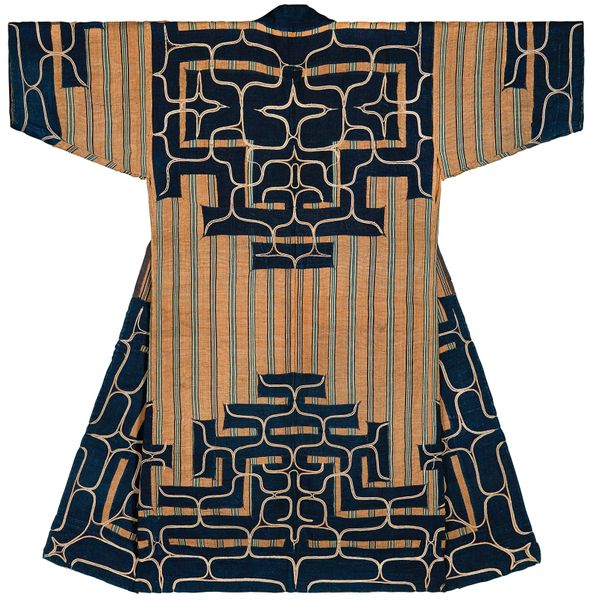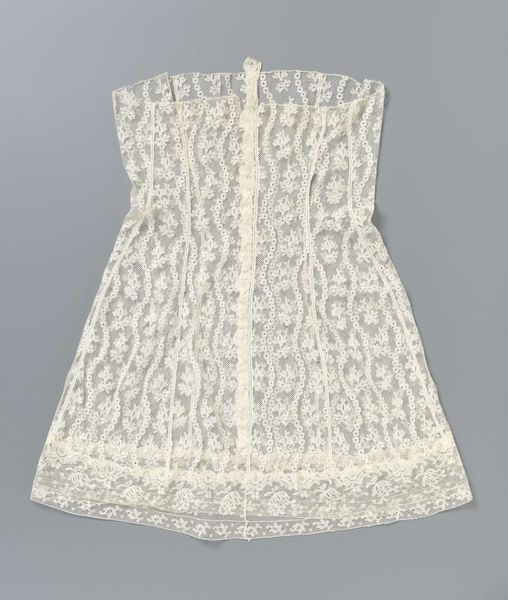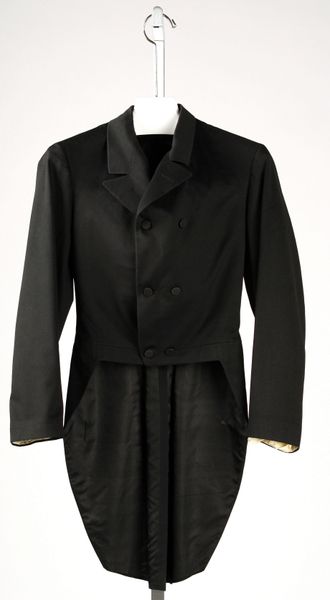
fibre-art, silk, textile
#
fibre-art
#
silk
#
asian-art
#
textile
#
fashion and textile design
#
pattern design
#
repetitive shape and pattern
#
repetition of pattern
#
regular pattern
#
pattern repetition
#
textile design
#
decorative-art
#
imprinted textile
#
layered pattern
#
combined pattern
Dimensions: 58 × 49 3/4 in. (147.32 × 126.37 cm) (overall)
Copyright: No Known Copyright
Editor: We are looking at a “Chijiri robe with yellow embroidery” dating from the early 20th century. It’s a fascinating textile piece housed here at the Minneapolis Institute of Art. What strikes me is the boldness of the dark fabric and the intricate pattern, almost like a complex maze. What do you see in this robe? Curator: I see a powerful intersection of tradition and personal expression. The kimono form itself is loaded with cultural significance, but this one diverges from typical representations, doesn’t it? That abstract, almost psychedelic pattern disrupts the usual naturalistic motifs. To me, it raises questions about individual identity versus social conformity in early 20th century Japan. Editor: So, you are saying that it could be a statement against the social expectations put upon the wearer? Curator: Precisely. Consider the social constraints placed particularly upon women at that time. This robe could be read as a subversive act, a quiet rebellion expressed through personal adornment. The repetition of the pattern, although visually pleasing, might also symbolize the cyclical nature of societal pressures. Do you find the colour palette to be significant? Editor: Definitely, the contrast between the dark robe and the gold embroidery is striking. It suggests a kind of hidden luxury or inner strength. I hadn’t really thought about the person wearing the robe before. Curator: And how it was used, too! Consider the craftsmanship—the time and skill poured into creating this unique piece. Who was the artisan? What was their life like? The lack of attribution pushes us to consider the overlooked labour behind even seemingly simple garments. Editor: It’s fascinating to think of the garment as more than just a beautiful object but also as a silent commentary. I’m starting to see how personal adornment can become a powerful form of social commentary. Curator: Indeed. And hopefully, appreciating the artistry here makes us question our assumptions about art, craft, and the role of women in shaping visual culture.
Comments
minneapolisinstituteofart about 2 years ago
⋮
Chijiri is a general term used for Ainu garments that are directly embroidered without appliqué. Absent the added layer of appliquéd cloth, the embroidery must stand on its own, demanding perfection. Ainu women selected thread colors, such as yellow, to contrast with, while also complement, the rich tones of these robes. They also considered various types of stitchwork—here, chain and couch—for the distinct visual qualities they offered. and then rendered stitches that are precise, small, and uniform.
Join the conversation
Join millions of artists and users on Artera today and experience the ultimate creative platform.
